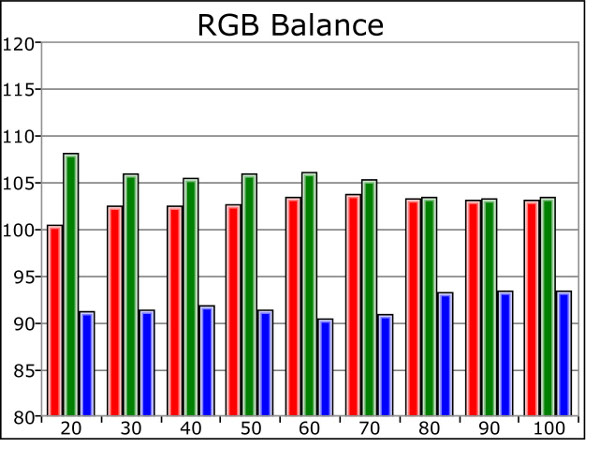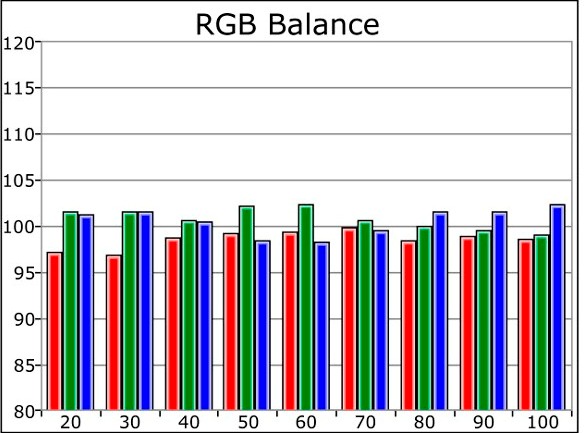Toshiba 58L7300U LCD HDTV Test Bench
I performed pre-calibration measurements of the 58L7300U in its Movie preset/Warm color temperature mode with all adjustments left at their default settings. Post-calibration measurements were made in Movie mode with adjustments for dim room viewing. With the TV’s DynaLight mode on and Low Dynamic Contrast setting selected, black level measured 0.005 foot-lamberts and 28.53 ft-L on a 100-IRE pattern, to yield a native contrast ratio of 5,706:1. Maximum brightness in Movie mode with the backlight setting pushed to maximum was 93.9 ft-L.
BEFORE Calibration
AFTER Calibration
The Delta E of the set’s pre-cal gray scale averaged out to a way-off-target 11.0; post-calibration, it was much improved at 2.4, with a high of 3.4 at 60 % brightness. (Delta E is a figure of merit that indicates how closely a display adheres to the Rec. 709 HD color standard. Experts generally agree that levels below 3 are visibly indistinguishable from perfect color tracking.)
The Delta E of the set’s color points in the default settings averaged a just-OK 2.9. After I tweaked the Toshiba’s Base Color Adjustment color-management system settings, that average improved to 0.6—an excellent result, and one that contributed to the set’s accurate color rendition.
Since the 58L7300U doesn’t provide any gamma presets, it was difficult to move the needle on its 1.7 default measured gamma, a result that deviated quite a bit from the 2.2 target and was most likely responsible for the too-light cast I saw in some reference movie scenes.
Picture uniformity was very impressive, especially for a budget LED-lit LCD model. I noted only slight screen clouding on a full-screen black test pattern, though the effect wasn’t visible on program content when the TV’s DynaLight mode was active. Off-axis uniformity was just average, with contrast remaining uniform at 15° off-axis seats but not beyond that point.
The Toshiba passed most of our standard video-processing tests—but only when its ClearScan motion-interpolation modes were switched on. In most cases, turning on such modes will introduce a video-like “soap-opera effect,” though I can’t say I noticed it when the set’s Standard ClearScan mode was active. (All ClearScan modes were effective in bumping up motion resolution to 1,000-plus lines.) One test it failed across the board was Chroma Resolution, a fairly common result we’ve seen even with otherwise good-performing TVs.—AG
























































